The transition to electric vehicles (EVs) demands the development of specialized lubricants to meet their unique operating conditions. Unlike internal combustion engines, electric drivetrains feature distinct architectures that introduce new challenges in managing friction and wear.
Electrified tribology testing replicates the combined electrical and mechanical stresses experienced by EV components, offering critical insights into lubricant performance under real-world conditions. This application note examines the role of electrified tribotesting in optimizing EV lubricants, with a focus on their frictional, wear, and thermal properties.
This article will highlight a study that investigates the impact of electrical currents on the friction and wear behavior of lubricated steel sliding contacts using a pin-on-disc Bruker UMT TriboLab® tribometer equipped with both AC and DC power sources.
Tests were conducted on steel ball-on-flat contacts under varying speeds, loads, and lubricant temperatures using commercially available EV fluids. The results show that the application of AC and DC currents significantly influences the coefficient of friction (COF) and wear, highlighting the importance of electrified tribological testing in the development of advanced EV lubricants.
Friction and Wear Testing for Electric Vehicle Lubricants
The shift from internal combustion engine (ICE) vehicles to EVs is a significant change for the automotive industry, driven by the need to reduce emissions and boost energy efficiency. This transition calls for the development of specialized lubricants designed to meet the unique demands of EV systems.
Unlike ICE vehicles, which rely on engine oil for lubrication, EVs primarily use lubricants for components like electric drivetrains, gearboxes, and bearings. These parts operate under very different conditions, creating new challenges for managing friction and wear. To ensure EVs are efficient, durable, and reliable, it’s crucial to understand and optimize the performance of their lubricants through targeted friction and wear testing.
Friction and wear testing for EV lubricants involves determining their capacity to reduce frictional resistance and material degradation under a variety of operating circumstances.
Unlike conventional vehicles, EVs do not generate the high temperatures associated with internal combustion engines, but they still operate at high speeds and torque. This creates novel tribological difficulties that must be solved to ensure the durability and efficacy of EV components.
For example, the high-speed rotation of electric motors can cause higher shear stress and wear, meaning that lubricants are needed that can retain stability and performance across a wide range of speeds and temperatures.
Lubricants for electric vehicles are tested in a controlled laboratory environment, replicating real-world operating circumstances. Tribometers are primarily used to test the frictional and wear characteristics of lubricants under various loads, speeds, and temperatures.
The pin-on-disc test is a standard method for evaluating the interaction between a revolving disc and a stationary pin coated with lubricant. This test offers useful information about the coefficient of friction, wear rates, and the lubricant's capacity to generate protective layers that prevent metal-to-metal contact.
In addition to mechanical loads, electric vehicle lubricants must endure electrical stresses caused by the presence of electric fields in drivetrains.
A study employing a block-on-ring arrangement on a Bruker UMT TriboLab found that the presence of electrical voltages might potentially increase wear on tribopairs, indicating that electrification has a substantial impact on the tribological performance of lubricants used in EV drivetrains.1
Electrified tribotesting is essential for precisely assessing the electrical conductivity and propensity for electrical corrosion of lubricants under realistic conditions, which are especially critical in minimizing electrical pitting and maintaining the lubricant's long-term efficiency.
While including electric voltage in tribotesting settings can provide useful insights into the influence of current on lubrication conditions, electrified tribotesting faces numerous recurrent challenges to general adoption.
These barriers include:
a) Electrified tribotesting demands specialized equipment and methods due to the complexity of the interaction between electric fields and tribological systems.
b) Installing and maintaining electrified tribometers might demand additional skills and resources.
c) Maintaining the safety and dependability of electrified tribotesting setups is vital for avoiding accidents and validating experimental results.
This article explores how external electrification affects the friction and wear behavior of sliding contacts using a ball-on-disc Bruker UMT TriboLab setup. The study successfully determines the major effects of temperature, load, and voltage on the friction and wear behavior of several EV lubricants.
The findings demonstrate significant correlations between these parameters and their effects on friction and wear, opening the way to close a critical gap in current tribological testing procedures for EV lubricants.
An Accessible Setup for Electrified Tribotesting
Bruker's UMT TriboLab is a versatile, modular tribometer that can perform a variety of tribological tests, such as pin-on-disc, reciprocating, and block-on-ring. It provides customized test sets and protocols, allowing for personalized tests to fulfill specific research and development requirements, such as electrified tribotesting.
The tribometer is equipped with high precision sensors that can detect friction forces, wear depth, and electrical parameters all at once, providing real-time insights into the interaction of electrical and tribological elements.
UMT TriboLab is one of the few commercial electrified tribometers, and it provides numerous key advantages for dependable and complete electrified friction and wear testing:
- Advanced Testing Capabilities: UMT TriboLab's advanced testing capabilities include several modes and environmental control, allowing for testing under varying conditions like temperature and AC/DC electrification. Its versatility in conducting experiments in lubricated, dry, or submerged environments makes it perfect for extensive tribological studies that mimic real-world operating circumstances.
- Standards Compliance: UMT TriboLab supports conventional tribology tests (ASTM, DIN, ISO) using electrical currents and voltages, ensuring compliance with industrial standards.
- Precision and Accuracy: The tribometer provides fine control over test variables such as load, speed, temperature, and electrical conditions, accurately mimicking materials in real-world applications. High-resolution sensors provide accurate measurements of friction, wear, and other tribological parameters, resulting in reliable and reproducible results.
- Upgradeability: Non-electrified UMT TriboLab platforms can be modified to incorporate electrified testing, and new modules can be added at any time.
Electrified Ball-on-Disc Testing of Two EV Lubricants
In this study, the ball-on-disc arrangement was chosen for its ability to closely simulate real-world applications involving sliding or rolling contact, such as bearings, gears, and other mechanical parts.
This configuration offers fine control over contact conditions, including load, speed, and temperature, while preserving a uniform electric field throughout the contact surface, as demonstrated in the literature.2
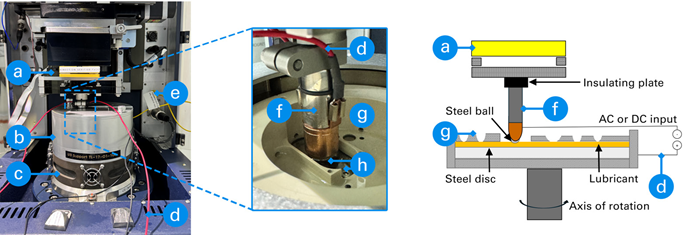
Figure 1. Ball-on-disc setup on a UMT TriboLab equipped with an external electrification source. Labels indicate: (a)Bruker-patented3D force/friction sensor, (b) heating chamber, (c) high-speed rotary drive,(d)4-wire connection,(e)temperature sensor,(f)ball holder with beryllium copper contact ring, (g) disc holder with lid featuring circulation holes, and (h) sliding contact interface. Image Credit: Bruker Nano Surfaces and Metrology
Figure 1 shows the complete assembly of the electrified ball-on-disc setup on the UMT TriboLab tribometer, highlighting the locations of applied potentials and temperature measurement points. In this setup, a steel ball is pressed against a rotating disc submerged in 12 mL of lubricant within the disc holder.
An AC or DC power supply is connected to the ball holder, which contacts the ball, and to the contact points on the rotary drive to introduce external electricity during sliding.
The ball and disc are electrically isolated from the test instrument to ensure the applied potential is confined to the interface between the ball and the disc, passing through the lubricant film. This isolation is essential to prevent unintended electrical pathways that could damage the instrument's components and electronics.
The ball-on-disc arrangement was placed in an enclosed heating chamber, allowing test temperatures of up to 250 °C. A temperature sensor built into the rotary drive monitors the test temperature.
To address the issues of high-speed testing generating a liquid vortex, the disc holder has a lid with circulation holes that reduce lubricant loss while providing good lubricant circulation at speeds of up to 5000 rpm.
Samples for this study included a 52100-alloy steel ball (6.35 mm diameter) and a disc (69.85 mm diameter, surface Ra = 8 µm).
The friction and wear performance of two commercially available lubricants formulated for EV applications (called Lubricant A and Lubricant B) were evaluated at room temperature and after heating under both unelectrified and electrified conditions (DC: 0 A, 0.5 A, 1.5 A, and 3.0 A; AC: 0 A, 0.5 A, 2.0 A) in terms of wear scar circumference and COF.
Relationship between Friction, Wear, and Electrification
Figure 2 depicts the friction coefficient and wear scar diameter in Lubricant A under various test settings. The COF increased significantly—by more than 40 %—when transitioning from unelectrified to initial electrified conditions (Figure 2e, 0 to 0.5 A). It continued to rise gradually with increasing DC electrification.
These changes are likely due to the chemical properties of the lubricant. The application of electrical current can influence the lubricant film thickness, potentially enhancing the adsorption or desorption of polar additives. Additionally, electricity may stimulate or suppress redox reactions at the contact interface, further impacting friction behavior.
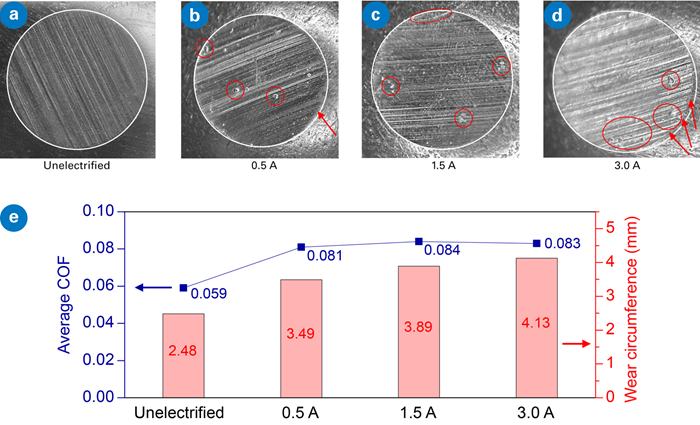
Figure 2. Steel pair (a–d) wear and (e) COF at room temperature under varying DC current magnitudes in Lubricant A (applied force = 120 N, sliding speed = 1000 rpm, sliding duration = 1 h). The red circles highlight the spark pits observed on the wear scars, while the red arrows indicate the uneven scrap edges present on the ball specimen. Image Credit: Bruker Nano Surfaces and Metrology
Wear scars from both unelectrified and electrified tests displayed abrasive marks aligned with the sliding direction (Figure 2a–d). However, the wear scars from the electrified tests were up to 67 % larger in circumference. These marks were primarily caused by abrasion from the asperities of the countersurface and loose debris.
Electrified tests also showed spark pits within the wear scars, indicating electrical erosion during sliding contact. At higher current levels (1.5 A and 3 A), the wear scars exhibited scrapped edges, where material chipped off, leaving uneven surfaces. This suggests that electrification softened the material, increasing its susceptibility to third-body abrasive wear during mechanical scraping.
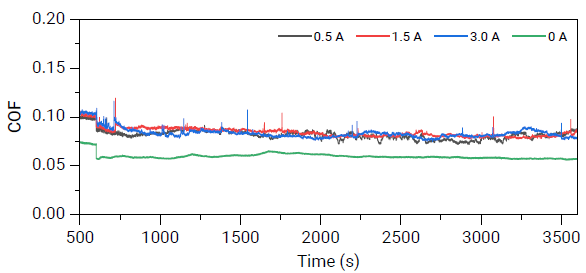
Figure 3. COF versus sliding duration at room temperature under various DC currents for Lubricant A (applied force = 120 N, sliding speed = 1000 rpm, sliding duration = 3000 s). Image Credit: Bruker Nano Surfaces and Metrology
The comparison of COF changes across the test time (Figure 3) highlighted the fact that electrification causes significant fluctuations in the COF trend. COF stays reasonably low and steady in the unelectrified condition, ranging from 0.05 to 0.06 for the sliding period.
Under the 0.5 A test condition, the COF begins higher than in the unelectrified state and gradually increases, with significant noise and fluctuation. This shows that electrification may improve adhesion between contact surfaces by changing surface charges, resulting in a larger COF.
COF values are reasonably consistent at 1.5 A and 3.0 A, at 0.08, with the latter slightly higher. Thermal effects from electrification can cause localized softening of materials, leading to greater deformation and friction, which is most visible at higher current levels.
These findings indicate that electrification influences both chemical and physical interactions at the interface, resulting in higher friction relative to unelectrified situations. Further research, such as surface analysis and lubricant characterization, could shed further light on these impacts.
Effect of Heating on Electrified Tribotesting
Figure 4 shows a comparison of wear scars and friction coefficients from the heated and electrified tribotesting studies. The addition of a 2 A DC current at 25 °C enhanced the COF somewhat, but the wear scar circumference increased dramatically, from 1.97 mm to 2.84 mm.
When the lubricant temperature reached 60 °C, the impact on the COF and wear scar was modest. However, heating to 120 °C resulted in a considerable rise in both the COF (0.156) and the wear scar circumference (5.00 mm).
These variations in COF and wear scars are most likely caused by a decrease in lubricant viscosity, which results in thinner lubricant films and more direct metal-to metal contact.
In addition, high temperatures may increase the electrical conductivity of the lubricant, affecting charge distributions at the interface and adding to greater wear, resulting in evident uneven scrap edges.
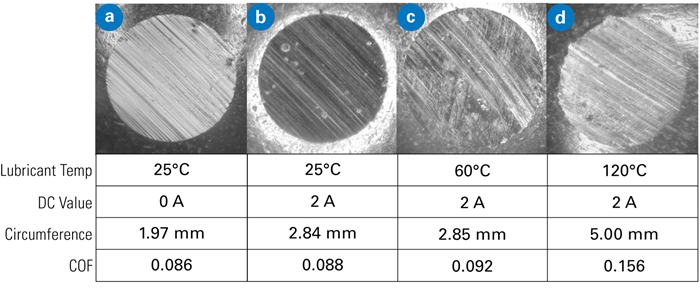
Figure 4. Friction coefficient and wear scar circumference of 52100 ball specimens tested in Lubricant B at different temperatures (applied force = 90 N, sliding distance = 5000 m). Image Credit: Bruker Nano Surfaces and Metrology
Effects of AC Electricity
Under the impact of AC electricity, the tribopairs immersed in Lubricant A showed varied COF and wear behavior, showing a complicated relationship between AC electrical effects and tribological performance.
Figure 5 demonstrates that the COF roughly doubles when 0.5 VAC is introduced but declines as the voltage climbs to 1.0 V and 2.0 V. The wear scar is significantly smaller at 1.0 V than at 0.5 V, but grows larger at 2.0 V.
This implies that the AC field influences the material surface structure, resulting in material loss and degradation.
The drop in COF could be attributed to interface alterations caused by the creation of a lubricating film, the adsorption of charge-promoted ions from additives, or redox reactions that encourage metal oxide production, resulting in a less harsh boundary regime.
However, these hypotheses require further chemical analysis, which is beyond the scope of this evaluation study.
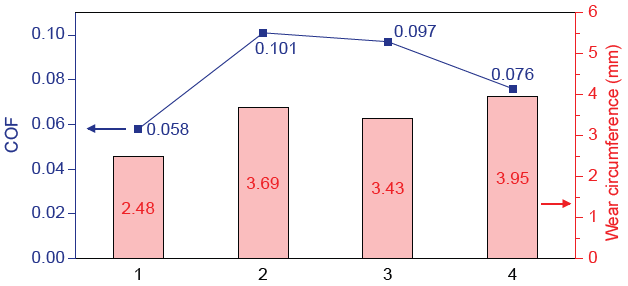
Figure 5. Friction coefficient and wear of 52100 steel pair under varying AC current in Lubricant A. Image Credit: Bruker Nano Surfaces and Metrology
Summary
This article describes an electrically isolated ball-on-disc test setup using Bruker's UMT TriboLab to investigate the effects of applied electrical potential on EV drivetrain fluids.
This study examined the COF and wear properties of 52100 steel under varied weights, temperatures, and electrification settings.
DC current was applied across the contact interface during ballon-disc testing, causing significant changes in the tribological behavior of 52100 steel pairs, with notable increases in both COF and wear scar circumference.
The combination of high temperatures and DC electrification significantly amplified wear and friction, likely due to thermal softening and oxidation effects at the sliding interface. In contrast, the application of AC voltage initially led to an increase in both the COF and wear. However, as the AC voltage increased further, the COF began to decrease, while the wear scar continued to enlarge.
This preliminary study in EV tribology testing demonstrates that the application of electrical voltage or current has a noticeable impact on the COF and wear of tribological pairs.
The impact of electrical conditions on friction and wear can be quite complex, requiring careful experimental design and analysis to fully understand. The UMT TriboLab is an excellent tool for electrified tribotesting of EV lubricants, thanks to its user-friendly design, standards-based testing methods, advanced real-time measurement features, and ability to accurately simulate real-world conditions.
Acknowledgments
Produced from materials authored by Damien Khoo, Bruker Staff Scientist—Tribology Applications and Systems.
References
- Lee, P.M., et al. (2023). Tribological evaluation of electric vehicle driveline lubricants in an electrified environment. Frontiers in mechanical engineering, 9. https://doi.org/10.3389/fmech.2023.1215352.
- Cao-Romero-Gallegos, J.A., et al. (2024). The effect of electrical current on lubricant film thickness in boundary and mixed lubrication contacts measured with ultrasound. Friction, 12(8), pp.1882–1896. https://doi.org/10.1007/s40544-024-0890-7.
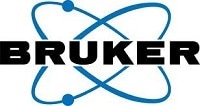
This information has been sourced, reviewed, and adapted from materials provided by Bruker Nano Surfaces and Metrology.
For more information on this source, please visit Bruker Nano Surfaces and Metrology.